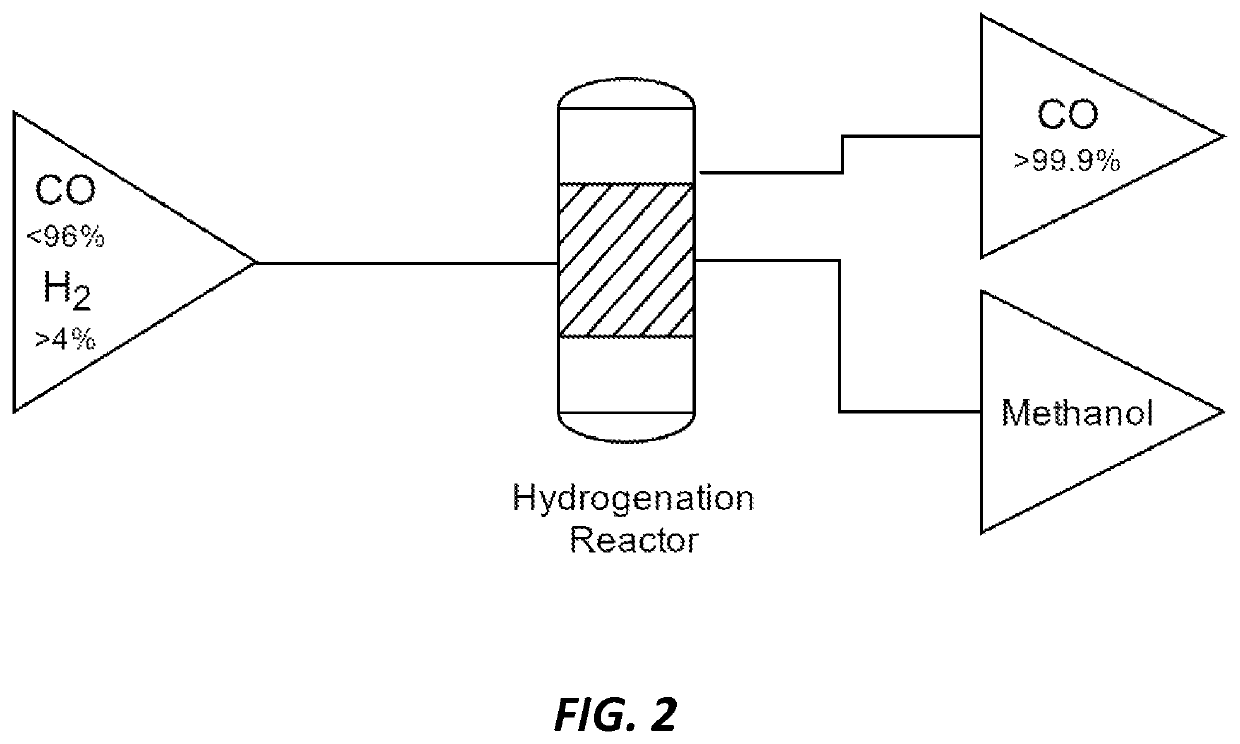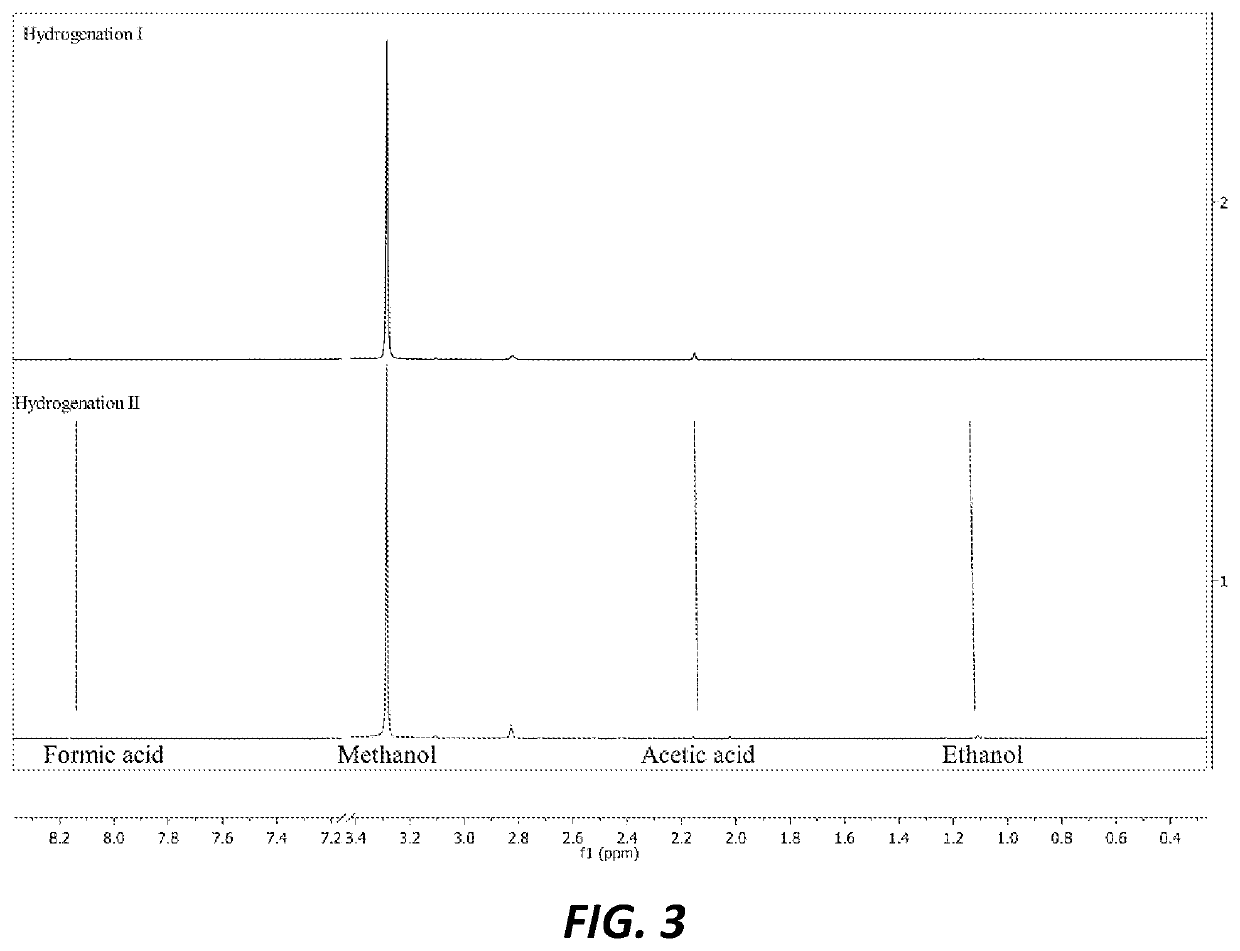Methods and catalysts for the selective production of methanol from carbon dioxide and hydrogen gas for chemical synthesis and gas purification
a technology of carbon dioxide and hydrogen gas, which is applied in the direction of physical/chemical process catalysts, metal/metal-oxide/metal-hydroxide catalysts, etc., can solve the problems of difficult to achieve all, need more active and expensive metals, and low selectivity of pd-based catalysts, etc., to achieve high selectivity for methanol, low cost, and high surface area support
- Summary
- Abstract
- Description
- Claims
- Application Information
AI Technical Summary
Benefits of technology
Problems solved by technology
Method used
Image
Examples
example 1
Preparation of Catalysts for Selective Methanol Production
[0033]Palladium(II) acetylacetonate (10 mg), copper(II) acetylacetonate (6.7 mg), ferric chloride hexahydrate (5.4 mg), ascorbic acid (35.6 mg) and oleylamine (5 mL) were added into a glass vial. The mixture was ultrasonicated for 2 hours. It is then heated in oven at 160° C. for 5 hours and 180° C. for 3 hours. The nanoparticles were collected by centrifugation and washed three times with mixture of cyclohexane and ethanol (1:1). The nanoparticles were then loaded to P25 Titanium Dioxide support (21 nm particle size) by stirring together in chloroform solution for 3 hours. The supported catalyst was then separated by centrifugation and washed with acetone three times to result in a white-colored powder. The product was thermally annealed in air at 300° C. for 1 hour and then in 5% H2 / N2 at 300° C. for 1 hour, resulting in a dark blue / black powder.
example 2
Production of Methanol by Carbon Dioxide Hydrogenation on a Pd2Cu Catalyst
[0034]For Hydrogenation Run I, 5.4 mg of supported catalyst synthesized as described in Example 1 was charged along with 5 mL of DI water into a Teflon liner in a 100 mL continuously stirred batch reactor. The reactor was then pressurized with carbon dioxide (100 psi) and hydrogen (364 psi). The reaction was performed with mechanic stirring at 200° C. for 5 hours before cooling down to room temperature. The system was then vented and the liquid products were filtered through Celite. The liquid mixture was analyzed with NMR spectroscopy with maleic acid as internal standard, and it was found to have generated 0.5 mmol (0.02 g) methanol. It produced other compounds in smaller ratios, specifically ethanol:methanol:formic acid:acetic acid=1:63:0.2:0.3 indicating 63 times more methanol than other products.
[0035]For Hydrogenation Run II, 13.5 mg of supported catalyst was charged along with 10 mL of DI water into a T...
PUM
| Property | Measurement | Unit |
|---|---|---|
| partial pressure | aaaaa | aaaaa |
| partial pressure | aaaaa | aaaaa |
| partial pressure | aaaaa | aaaaa |
Abstract
Description
Claims
Application Information
 Login to View More
Login to View More - R&D
- Intellectual Property
- Life Sciences
- Materials
- Tech Scout
- Unparalleled Data Quality
- Higher Quality Content
- 60% Fewer Hallucinations
Browse by: Latest US Patents, China's latest patents, Technical Efficacy Thesaurus, Application Domain, Technology Topic, Popular Technical Reports.
© 2025 PatSnap. All rights reserved.Legal|Privacy policy|Modern Slavery Act Transparency Statement|Sitemap|About US| Contact US: help@patsnap.com



